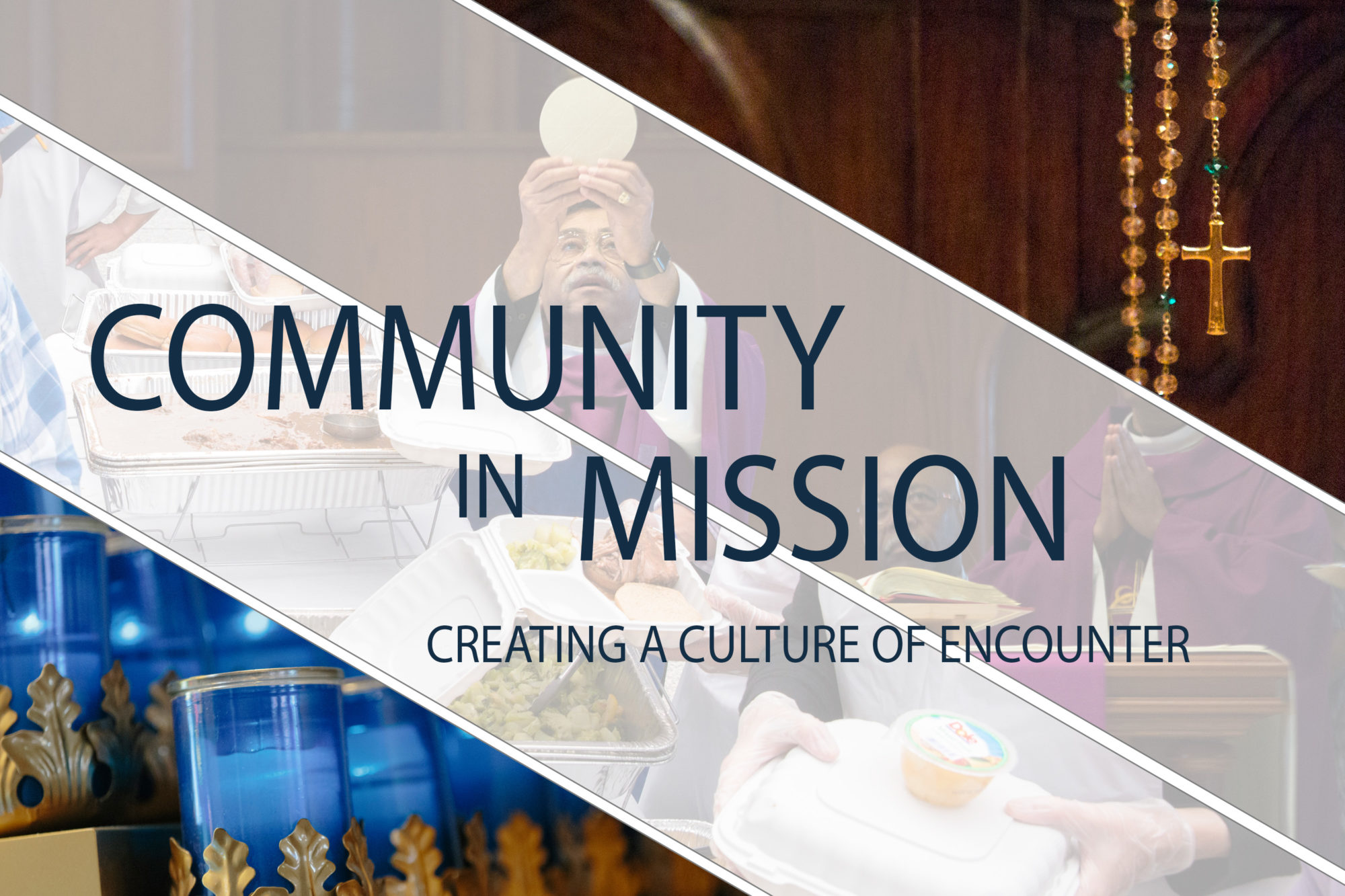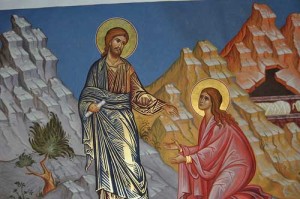 A reader alerted me to an interesting and insightful analysis by Pope Leo XIII of three trends that both alarmed him and pointed to future problems. He wrote of these three concerns in 1893 in the Encyclical on the Holy Rosary entitled Laetitiae Sanctae (Of Holy Joy). The Pope enunciates these three areas of concern and then offers the mysteries of the Rosary as a necessary remedy. Lets look at how the Pope describes the problems and then consider too what he sees as a solution. His teaching is in bold, italic, black. My remarks are in plain text, red.
A reader alerted me to an interesting and insightful analysis by Pope Leo XIII of three trends that both alarmed him and pointed to future problems. He wrote of these three concerns in 1893 in the Encyclical on the Holy Rosary entitled Laetitiae Sanctae (Of Holy Joy). The Pope enunciates these three areas of concern and then offers the mysteries of the Rosary as a necessary remedy. Lets look at how the Pope describes the problems and then consider too what he sees as a solution. His teaching is in bold, italic, black. My remarks are in plain text, red.
There are three influences which appear to Us to have the chief place in effecting this downgrade movement of society. These are–first, the distaste for a simple and laborious life; secondly, repugnance to suffering of any kind; thirdly, the forgetfulness of the future life. (# 4)
Problem 1 – The distaste for a simple and laborious life – We deplore….the growing contempt of those homely duties and virtues which make up the beauty of humble life. To this cause we may trace in the home, the readiness of children to withdraw themselves from the natural obligation of obedience to the parents, and their impatience of any form of treatment which is not of the indulgent and effeminate kind. In the workman, it evinces itself in a tendency to desert his trade, to shrink from toil, to become discontented with his lot, to fix his gaze on things that are above him, and to look forward with unthinking hopefulness to some future equalization of property. We may observe the same temper permeating the masses in the eagerness to exchange the life of the rural districts for the excitements and pleasures of the town….(#5)
One of the truths that sets us free is to simply realize and come to accept that life is hard. It involves trials, arduous work, and setbacks, along with some of the progress we can and do experience. Very few things of true values come to us without a significant cost. Simply put, life is hard. But, coming to accept this is a freeing thing for many of our resentments are minimized or removed by this acceptance. The fact is, many today expect that life should be peachy. And when it is not, there is resentment, anger, even threats of lawsuits. Many today think of happiness as a God-given right. Our Founding Fathers recognized the pursuit of happiness as a goal. But today many expect that happiness to be the norm and to be a sort of right. When it does not exist for them, there has been a failure of the system somehow. Many today expect to live lives where there is little danger, and where things come easily. This has been one of the factors that influenced the growth of government. For as insistence on a comfortable life grows and hard work seems unreasonable, we expect government to ease our burdens and provide increasing levels of comfort and happiness, and we are less willing to work hard for these things. Rather we see happiness and comfort as things to which we are entitled.
But unrealistic expectations are premeditated resentments. And so, with often unrealistic expectations, people quickly grow resentful and even pout. It would seem that our ancestors who lived even as recently as 150 years ago had different notions. They looked for happiness alright, but largely expected to find that in heaven. Many of the old Catholic prayers bespeak a vision that this world was a place of travail, of exile, a valley of tears, where we sighed and longed to be with God. Most Catholics of those earlier times lived lives that were brutal and short. Most were peasants, and lived with far less creature comforts than we. There was no central air, electricity, running water, and medicines were few and far less effective. Entertainment was limited, houses were smaller, even tiny and transportation was far more limited.
We live so well compared to them. And though we are more comfortable, there is little evidence that we are happier. Indeed, we seem more resentful, because we expect more, a lot more. As the Pope notes, young people resent discipline and expect to be spoiled. The majority of parents seem willing to indulge them and shun giving correction since it raises tensions and causes difficulties.
The value of hard work and the satisfaction that comes from it seems lost on many today. Cardinal McCarrick used to counsel us priests that if we did not go to bed tired, something was wrong. We all need some rest and relaxation, sure, but hard work actually brings greater satisfaction to times of rest.
The fact is, high expectations of this world like we have today, breed discontent and resentments. For by it these unrealistic and high expectations, we really insist on living in a fantasy that this world is, or can be paradise. It cannot. A better strategy is to accept that life is difficult and, though it has its joys, it presents arduous difficulties to us that must be met with courage and acceptance. Though this is a hard truth it brings peace when it is accepted.
To the first error Pope Leo commend to our attention the Joyful mysteries and particularly a meditation on the implicit lessons of the home at Nazareth:
Let us take our stand in front of that earthly and divine home of holiness, the House of Nazareth. How much we have to learn from the daily life which was led within its walls! What an all-perfect model of domestic society! Here we behold simplicity and purity of conduct, perfect agreement and unbroken harmony, mutual respect and love….devotedness of service. Here is the patient industry which provides what is required for food and raiment; which does so “in the sweat of the brow,” which is contented with little….These are precious examples of goodness, of modesty, of humility, of hard-working endurance, of kindness to others, of diligence in the small duties of daily life, and of other virtues…., Then will each one begin to feel his work to be no longer lowly and irksome, but grateful and lightsome, and clothed with a certain joyousness by his sense of duty in discharging it conscientiously….home-life…loved and esteemed….(# 6).
Problem 2 – Repugnance to suffering of any kind – A second evil…. is to be found in repugnance to suffering and eagerness to escape whatever is hard or painful to endure. The greater number are thus robbed of that peace and freedom of mind which remains the reward of those who do what is right undismayed by the perils or troubles to be met with in doing so….By this passionate and unbridled desire of living a life of pleasure, the minds of men are weakened, and if they do not entirely succumb, they become demoralized and miserably cower and sink under the hardships of the battle of life. (# 7)
Yes, today more than ever, there is almost a complete intolerance to any sort of suffering. This has been fueled by the fact that we have been successful in eliminating a lot of suffering.
As noted, we have many creature comforts that protect us from the elements, medicines that alleviate physical pain and bodily discomforts, appliances and technology that provide unprecedented convenience and make a lot of manual labor all but unnecessary.
This, as we have also noted, leads to expectations which are ultimately unrealistic. Namely, that all suffering should be eliminated. There is almost an indignity expressed when one suggests that perhaps some things should be endured or that it is unreasonable to expect government, or doctors, or science to eliminate every evil or form of suffering.
Further, we seem to refuse the notion that accidents sometimes happen or that unfortunate circumstances will just occur. Instead we demand more laws that are often intrusive and oppressive, and we undertake huge lawsuits that often discourage the very risk taking that makes new inventions, medicines and medical techniques possible.
We often hold people responsible for things they can do little about. Sometimes economies just have cycles, climates too. Governments, laws and politicians cannot be expected to solve every problem or alleviate every burden. Sometimes accidents just happen.
Not a Padded room – While we can and should undertake to fix unnecessary hazards and seek to ease one another’s burdens, life isn’t a padded room. Suffering, sorrows, accidents, burdens and difficulties are part of life in this valley of tears. Acceptance of this truth leads to a kind of paradoxical serenity. Rejection of it and indulgence in unrealistic notions that all suffering is unreasonable leads to resentments and further unhappiness.
Here too, Pope Leo commend to us the rosary, in particular the sorrowful mysteries:
…If from our earliest years our minds have been trained to dwell upon the sorrowful mysteries of Our Lord’s life…we [may] see written in His example all the lessons that He Himself had taught us for the bearing of our burden of labor– and sorrow, and mark how the sufferings…He embraced with the greatest measure of generosity and good will. We behold Him overwhelmed with sadness, so that drops of blood ooze like sweat from His veins. We see Him bound like a malefactor, subjected to the judgment of the unrighteous, laden with insults, covered with shame, assailed with false accusations, torn with scourges, crowned with thorns, nailed to the cross, accounted unworthy to live….Here, too, we contemplate the grief of the most Holy Mother…”pierced” by the sword of sorrow…. (# 8 )
Then, be it that the “earth is accursed” and brings forth “thistles and thorns,”–be it that the soul is saddened with grief and the body with sickness; even so, there will be no evil which the envy of man or the rage of devils can invent, nor calamity which can fall upon the individual or the community, over which we shall not triumph by the patience of suffering….But by this patience, We do not mean that empty stoicism in the enduring of pain which was the ideal of some of the philosophers of old, but rather….It is the patience which is obtained by the help of His grace; which shirks not a trial because it is painful, but which accepts it and esteems it as a gain, however hard it may be to undergo. [Men and women of faith] re- echo, not with their lips, but with their life, the words of [the Apostle] St. Thomas: “Let us also go, that we may die with him” (John xi., 16). (# 9)
Yes, indeed, the cross is part of this life. But Christ has made it clear that the cross yields ultimately to glory if we carry it willingly and with faith.
Problem 3- Forgetfulness of the future life – The third evil for which a remedy is needed is one which is chiefly characteristic of the times in which we live. Men in former ages, although they loved the world, and loved it far too well, did not usually aggravate their sinful attachment to the things of earth by a contempt of the things of heaven. Even the right-thinking portion of the pagan world recognized that this life was not a home but a dwelling-place, not our destination, but a stage in the journey. But men of our day, albeit they have had the advantages of Christian instruction, pursue the false goods of this world in such wise that the thought of their true Fatherland of enduring happiness is not only set aside, but, to their shame be it said, banished and entirely erased from their memory, notwithstanding the warning of St. Paul, “We have not here a lasting city, but we seek one which is to come” (Heb. xiii., 4). (# 11)
I have become increasingly amazed at how little most modern people think of heaven. Even Church-going believers talk little of heaven, priest preach little on it. Our main preoccupation seems to be making this world a more comfortable and pleasant place. Even in our so-called spiritual life, our prayers bespeak a worldly preoccupation: Lord, fix my finances, fix my heath, get me a better job. Almost as though we were saying, “Make this world pleasant enough and I’ll just stay here.” It is not wrong to pray for better health etc. It is not wrong to work to make this world a better place. But in the end, our home is in heaven and we ought to be solicitous of it and eagerly seek its shores. It should be a frequent meditation, and to be with God forever, the deepest longing of our soul. Instead we fear getting “older” and hide death away in our culture. It ought to be that we can’t wait to see God. Sure, it would be nice to get a few things done that we’ve started, but as heaven and being with God draw closer, we ought to be happy that the years are ticking by faster. Each day is one day, closer to God!
Here too, our prosperity and creature comforts have mislead us into a love of this world that is unhealthy. A friend of the world is an enemy to God (James 4:4). We are distracted and too easily dismiss that this world is passing away. The fact is, we are going to die. Only a proper longing for heaven can correct the absurdity that an obsessional love for this world establishes in our soul.
Meditate on heaven often! Read the scriptures, such as Revelation 1, & 4-5, 20-21. Ask for a deeper longing from God.
Pope Leo commends the Glorious mysteries of the rosary to our attention as a medicine for this absurd attachment to this passing world and our forgetfulness of heaven:
These mysteries are the means by which, in the soul of a Christian, a most clear light is shed upon the good things, hidden to sense, but visible to faith, “which God has prepared for those who love Him.” From them we learn that death is not an annihilation which ends all things, but merely a migration and passage from life to life. By them we are taught that the path to Heaven lies open to all men, and as we behold Christ ascending thither, we recall the sweet words of His promise, “I go to prepare a place for you.” By them we are reminded that a time will come when “God will wipe away every tear from our eyes,” and that “neither mourning, nor crying, nor sorrow, shall be any more,” and that “We shall be always with the Lord,” and “like to the Lord, for we shall see Him as He is,” and “drink of the torrent of His delight,” as “fellow-citizens of the saints,” in the blessed companionship of our glorious Queen and Mother. Dwelling upon such a prospect, our hearts are kindled with desire, and we exclaim, in the words of a great saint, “How vile grows the earth when I look up to heaven!” Then, too, shall we feel the solace of the assurance “that this momentary and light affliction produces for us an eternal weight of glory beyond measure, exceedingly ” (2 Cor. iv., 17).
Here then are three diagnoses, and three remedies. It is interesting to see that the roots of them were already evident in 1893 and how they have come further to press upon us more than 100 years later. It is helpful to have a Doctor of Souls to help us name the demons that afflict us. For having named a demon, we have more power over it and learn its moves:
- Demon, your name is “laziness” and “distaste” for hard work. By the joyful mysteries of the Lord’s Life, be gone.
- Demon your name “refusal of any suffering” and an “resentment at the cross.” By the sorrowful mysteries of our Lord’s life, be gone.
- Demon your name is “forgetfulness of heaven” and “obsession with the passing world.” By the glorious mysteries of Lord’s life and our Lady’s too, be gone.
Photo: Orchard Lake via Creative Commons




